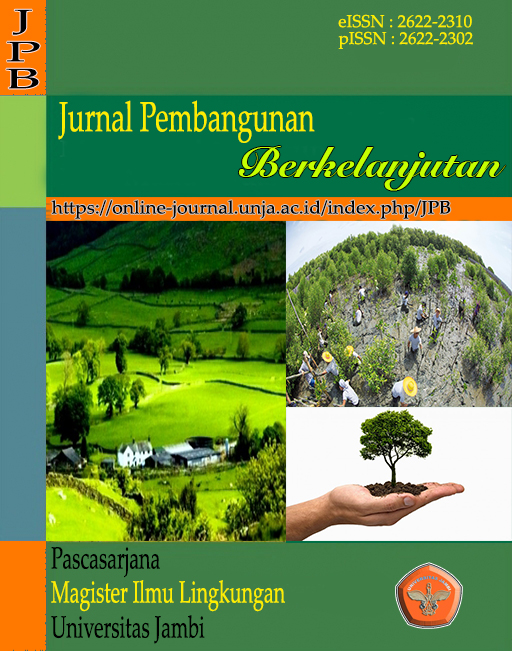Metode Strategic Asumption Surfacing And Testing (Sast) Dalam Upaya Peningkatan Pengelolaan Lingkungan Sektor Perhotelan Di Kota Jambi
DOI:
https://doi.org/10.22437/jpb.v4i2.18936Keywords:
Environmental, Management, Complience, SASTAbstract
This study measures environmental management compliance in the hotel sector in Jambi City and determines strategies to improve environmental management with Strategic Asumption Surfacing and Testing (SAST) method. Assessment of environmental management compliance by the hotel sector is measured through an assessment of 3 aspects, namely licensing, monitoring and reporting based on statutory indicators. Meanwhile, strategy determination uses the Strategic Assumption Surfacing And Testing (SAST) method by considering the assumptions of 15 factors based on certainty and importance levels, with a range of 1 to 5 intervals. The results shows that they have complied in licensing aspects, but have not complied in monitoring and reporting aspects. Assumption as a priority strategy by Jambi City’s Government to improve environmental management of hotel sector is increasing coordination efforts as guidance and supervision form in appeals, strengthening the structure and person in charge of environmental management, as well as providing environmental management facilities. Important to increase of guidance and supervision efforts by strengthening coordination with hotels in carrying out environmental management, especially strengthening the structure and person in charge of environmental management as well as to increase provision of environmental management facilities in hotels in Jambi City.
Downloads
Downloads
Published
How to Cite
Issue
Section
License
Copyright (c) 2022 Jurnal Pembangunan Berkelanjutan

This work is licensed under a Creative Commons Attribution 4.0 International License.
1. Authors retain copyright and grant the journal right of first publication with the work simultaneously licensed under a Creative Commons Attribution 4.0 International License that allows others to share the work with an acknowledgement of the work's authorship and initial publication in this journal.
2. Authors are able to enter into separate, additional contractual arrangements for the non-exclusive distribution of the journal's published version of the work (e.g., post it to an institutional repository or publish it in a book), with an acknowledgement of its initial publication in this journal.
3. Authors are permitted and encouraged to post their work online (e.g., in institutional repositories or on their website) prior to and during the submission process, as it can lead to productive exchanges, as well as earlier and greater citation of published work (The Effect of Open Access)











